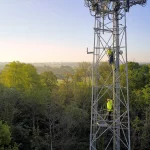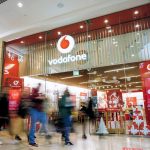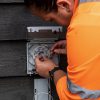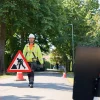Vodafone and Virgin Media O2 Put 4G and 5G on London Underground

Mobile and broadband providers Vodafone and O2 (VMO2) have today become the last two major UK network operators to reach a special deal with infrastructure firm BAI Communications (BAI), which will enable them to deploy 4G and 5G based mobile services across the entire London Underground (stations and tunnels).
At present, BAI holds a 20-year concession deal with Transport for London (TfL), which was signed in June 2021 (here) and allows them to build the new mobile infrastructure itself and to then make it available via wholesale for Mobile Network Operators (MNO) to harness.
The deal with BAI followed a successful trial on the Jubilee Line (eastern half of the line), which saw TfL install a neutral host distributed antenna system (DAS) that was supported by hundreds of kilometres of new fibre optic cable laid in tunnels for data capacity (fitted outside of operational hours). All four MNOs took part in that trial.
Advertisement
However, until now, only EE (BT) and Three UK had managed to reach an agreement to harness the new network, which was signed in December 2021 (here). The good news is that they’ve today finally been joined by the two remaining operators, Vodafone and O2 (VMO2). Vodafone had originally told us that they expected to sign up to this in January 2022, but better late than never.
Ahmed Essam, CEO at Vodafone UK, said:
“The UK needs world class digital infrastructure, and bringing 4G and 5G to the London Underground is a big part of that. 4G on the eastern stretch of the Jubilee line is already making a huge difference to our customers, and we’re proud to continue our investment in keeping consumers and businesses connected across more parts of London.”
Lutz Schüler, CEO at VMO2, said:
“With our 5G network already reaching two-thirds of Londoners, this investment will bring next-generation mobile connectivity deep underground for the first time ever, giving our customers a seamless service while on the move. We’ve already invested hundreds of millions of pounds in the capital to expand and upgrade our fixed and mobile networks which has accelerated London’s transformation into a cutting-edge digital hub, fuelling growth and connecting communities to gigabit services.”
Work on delivering 4G coverage across the Tube network is already said to be “well underway“, following the successful transfer of the previous pilot section on the eastern end of the Jubilee line to BAI earlier this year. Positive progress now means that the next five stations to get coverage – Bank, Oxford Circus, Tottenham Court Road, Euston, and Camden Town – will go live within the next 6 months, as previously expected.
All stations and tunnels across the Tube network remain on course to have “high-quality and uninterrupted mobile coverage“. Some sections of Tube network will go live by summer 2023 - including parts of the Central line including stations and tunnels through the City and West End. TfL and BAI are also continuing to progress with delivering mobile coverage across the recently opened central section of the Elizabeth line between Paddington and Abbey Wood.
As we recall from the original deal in June 2021, the plan is to have all of this completed by late 2024. The mobile operators will also ensure continued and improved coverage via WiFi on the London Underground and Elizabeth line when the network transfers to BAI in April 2023.
Advertisement
BAI expects to invest more than £1bn across the Connected London programme, which will see a backbone of mobile and digital connectivity established across London. A full-fibre network will also be delivered that will connect to buildings and street assets, like traffic lights and lampposts that house small mobile transmitter cells to leverage the power of 5G and the Internet of Things (IoT). These can then be used by boroughs, academics and developers to deliver improvements in everything from air quality and traffic congestion to public safety and city planning etc.
Naturally, it takes a long time to deploy this sort of network because it has to be done safely, to fit around an otherwise very busy underground transport network, where access is limited.
Mark is a professional technology writer, IT consultant and computer engineer from Dorset (England), he also founded ISPreview in 1999 and enjoys analysing the latest telecoms and broadband developments. Find me on X (Twitter), Mastodon, Facebook, BlueSky, Threads.net and Linkedin.
« 2022 H1 – UK Coverage of Gigabit Broadband Nears 70 Percent
ISP BT Discounts UK FTTC and FTTP Home Broadband Packages »






















































“With our 5G network already reaching two-thirds of Londoners”. :-))